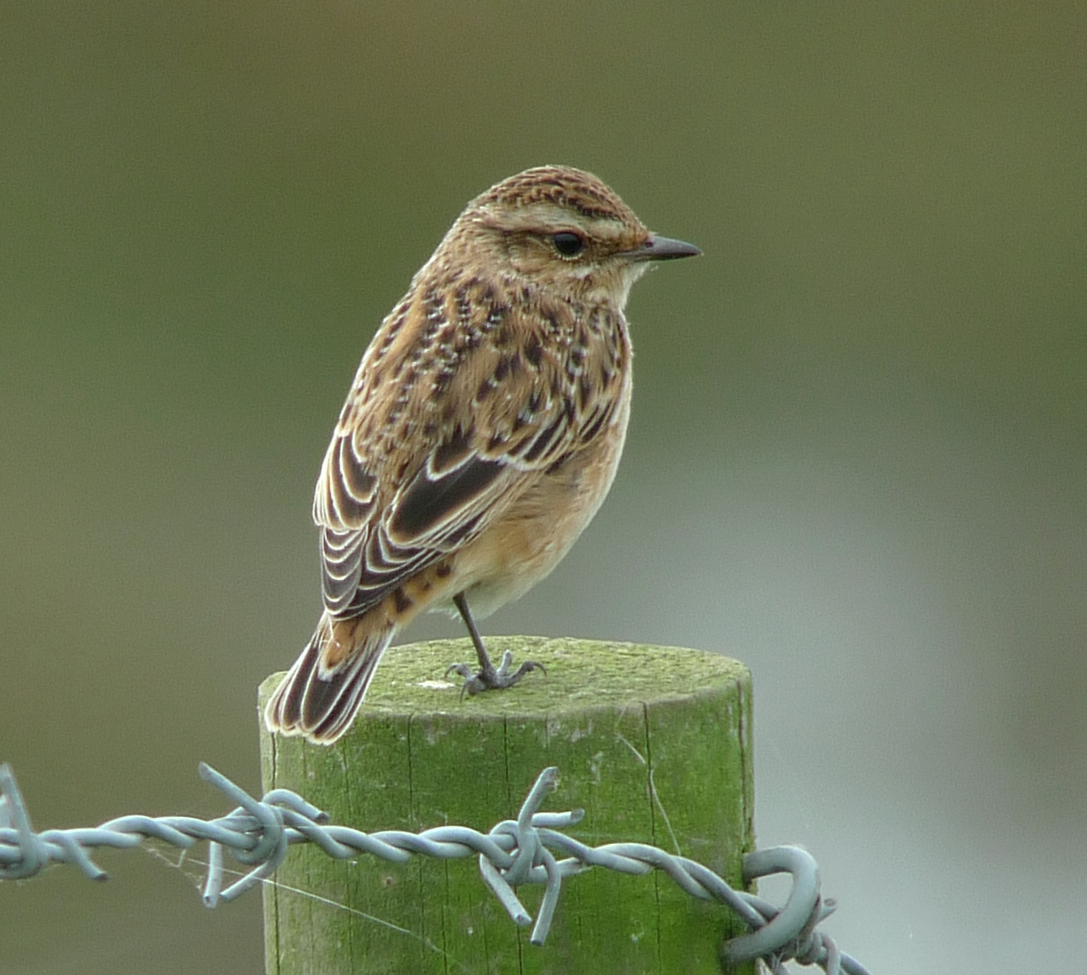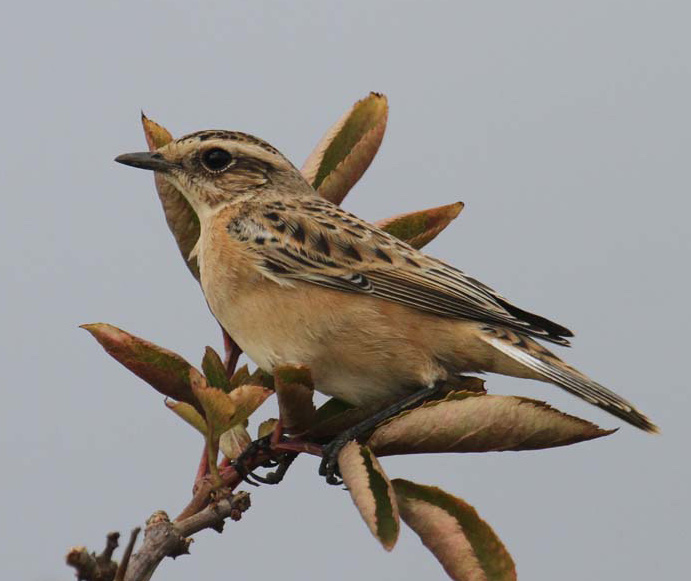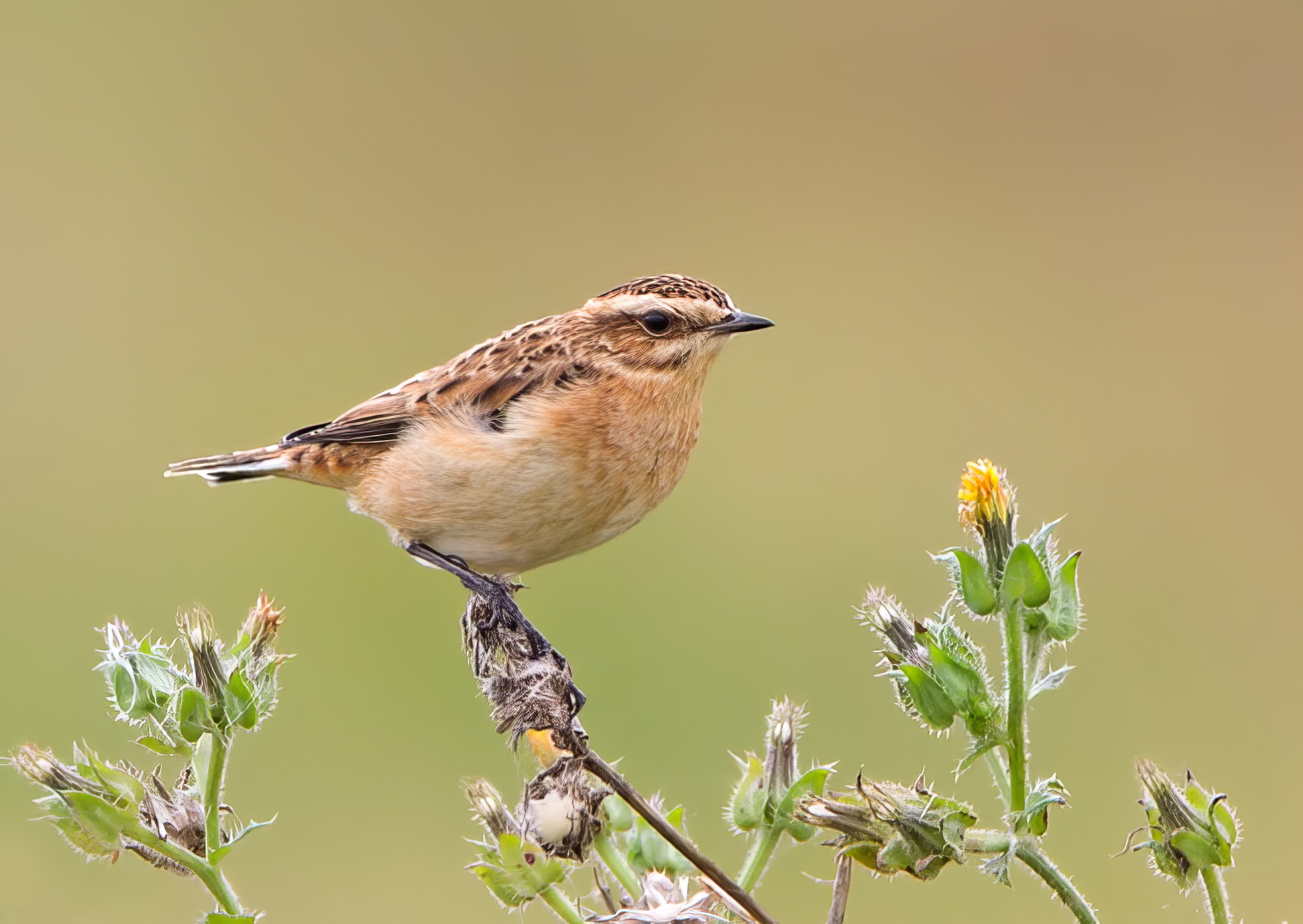Whinchat Saxicola rubetra
Scarce/fairly common passage migrant. Formerly a common breeder, last bred 1980s.



It's a sad fact that a bird Cordeaux (1872) described as “one of the commonest of our summer visitants, arriving in North Lincolnshire from the 20th of April to the first week of May inclusive, and leaving again in October” became extinct as a breeder in Lincolnshire with no one noting or lamenting its final passing. While it is now thought of as a bird of rough grasslands and heaths, in the 19th century it thrived in the extensive hay meadows required to power the nations agriculture. When the horses went, so did the hay meadows and Whinchats, Saxicola rubetra, with them, along with the Corncrake, Crex crex. (Newton, 2017). They hung on at Crowle Waste on the Isle of Axholme, but the Atlas showed only five confirmed breeding records in the 1980s and LBR does not record the date or location of the last breeding. There were no confirmed breeding records in the 1990s though adult males occasionally hold territory and sing as recorded at Butterwick Hale, June 12th, 1989, and at Crowle Waste in May 1999. Spring passage in the five years to 2018 as reported in LBR begins from April 11th-28th and the total number of birds ranged from eight in 2017 to 22 in 2015, an average of 15 birds per spring passage which finished from May 14th-30th. A notable feature of spring passage is that most birds occur inland. Autumn passage is more coastal, involves many more birds and lasts longer than spring. On average it begins from July 3rd-August 3rd and the largest peak one day counts ranged from 16 in 2017 and 2018 to 60 at Donna Nook on September 4th, 2014. Last dates were from September 27th-October 26th. There is a single record of an adult bird ringed in Sweden August 8th, 1966 and controlled in Skegness three weeks later on August 28th.
The UK population is in long term decline having fallen by 57% since 1994. APEP4 put the UK population at 50,000 pairs in 2016. Could it return to breed in Lincolnshire? With the right habitat creation, why not?
(Account as per new Birds of Lincolnshire (2021), included December 2022)
